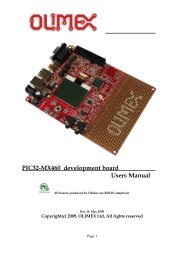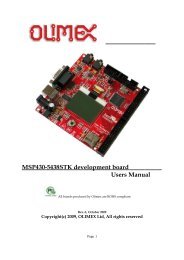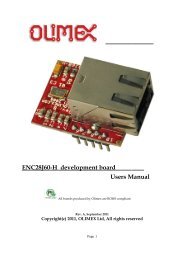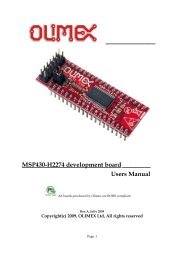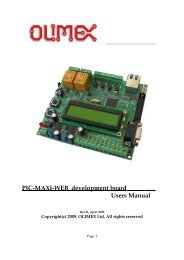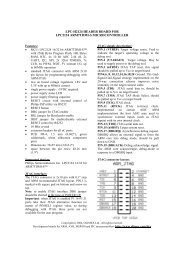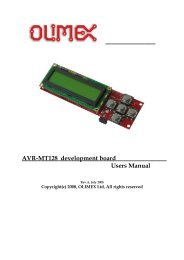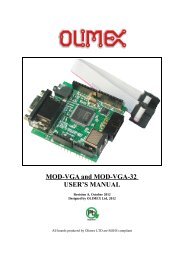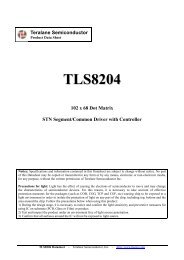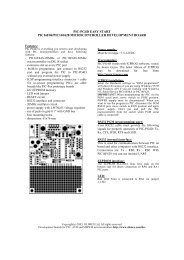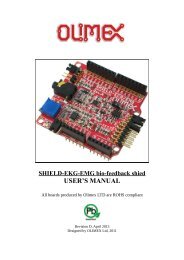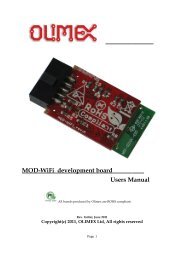STM-103STK development board Users Manual
STM-103STK development board Users Manual
STM-103STK development board Users Manual
You also want an ePaper? Increase the reach of your titles
YUMPU automatically turns print PDFs into web optimized ePapers that Google loves.
CAN:<br />
USB:<br />
ADC:<br />
The <strong>STM</strong>32F103RBT6 CAN is compliant with specifications 2.0A and B<br />
(active) with a bit rate up to 1 Mbit/s. It can receive and transmit standard<br />
frames with 11-bit identifiers as well as extended frames with 29-bit<br />
identifiers. It has three transmit mailboxes, two receive FIFOs with 3 stages<br />
and 14 scalable filter banks.<br />
The CAN and USB share same pins PA11 and PA12, so you can’t use both<br />
CAN and USB on same time.<br />
The <strong>STM</strong>32F103RBT6 embeds a USB device peripheral compatible with the<br />
USB Full-speed 12 Mbs. The USB interface implements a full speed (12<br />
Mbit/s) function interface. It has software configurable endpoint setting<br />
and suspend/resume support. The dedicated 48 MHz clock source is<br />
generated from the internal main PLL.<br />
The CAN and USB share same pins PA11 and PA12, so you can’t use both<br />
CAN and USB on same time.<br />
<strong>STM</strong>32F103RBT6 have two 12-bit Analog to Digital Converters which share<br />
up to 16 external channels, performing conversions in singleshot or scan<br />
modes. In scan mode, automatic conversion is performed on a selected<br />
group of analog inputs.<br />
Additional logic functions embedded in the ADC interface allow:<br />
- Simultaneous sample and hold<br />
- Interleaved sample and hold<br />
- Single shunt<br />
The ADC can be served by the DMA controller.<br />
An analog watchdog feature allows very precise monitoring of the converted<br />
voltage of one, some or all selected channels. An interrupt is generated<br />
when the converted voltage is outside the programmed thresholds. The<br />
events generated by the standard timers (TIMx) and the Advanced Control<br />
timer (TIM1) can be internally connected to the ADC start trigger, injection<br />
trigger, and DMA trigger respectively, to allow the application to<br />
synchronize A/D conversion and timers.



